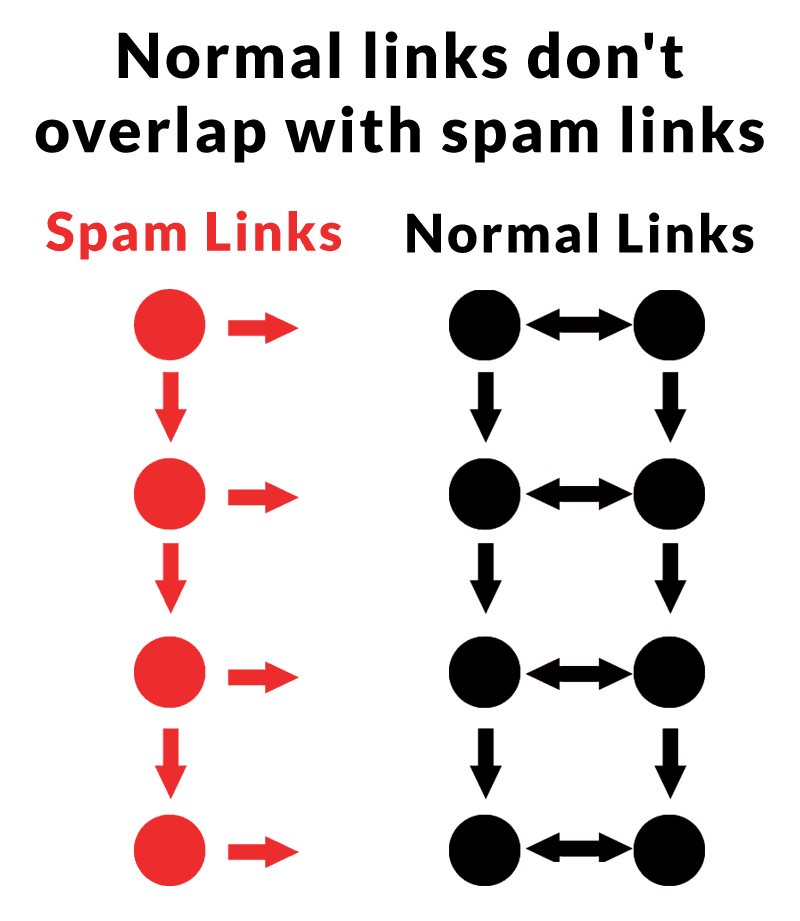Outbound have traditionally been considered a ranking or relevance related factor but those ideas are outdated now that search engines use AI for spam detection and the ranking process. It’s time to consider new ways of thinking about outbound links.
1. A Page Is About Multiple Subtopics
One thing people worry about is whether linking out to pages that aren’t specifically about what the entire page is about is a good practice. The more important thing to think about is if the sentence or paragraph supports an irrelevant outbound link then the bigger problem is that the entire paragraph is off-topic and should be removed. Every outbound link should be relevant to the context where it originates and every context should be relevant within the overall context of the entire page.
A webpage is rarely ever about one topic. It’s usually about one topic and the related subtopics, whatever makes sense for the user.
- Never link out because you think it will make the page more relevant for the topic or subtopic.
- Always link out if it makes sense within the context.
- If the content says that research proves X,Y, and Z then it makes sense to link out to a page about that research so that the user knows this is a fact.
A page that links out to other pages that are on related subtopics is fine.
2. Relevance Is Not Always About Keywords
In the context of outbound links, relevance could be said to be about how closely related a word, sentence, paragraph or webpage is to whatever is being linked to.
A more up to date definition of relevance is how closely the link aligns with the needs or expectations of the reader at the exact moment that an outbound link can satisfy those needs or expectations.
3. Poor Outbound Links May Impact Site Quality
Linking to low quality sites could cause Google to consider the linking site as also low quality. What a site links to may impact the quality of the site. But what’s a low quality site?
Check If The Site Is Created For Search Engines
The most current definition of a low quality site is one that is created to rank for search engines. That can be an affiliate site that’s created to rank for specific keyword phrases without any expertise, or anything to new or unique to add to what is already ranking for the topic.
Typical signs of site created to rank are keyword focused content (instead of reader-focused content), keyword focused titles, keyword focused headings, and virtually all the pages are about keywords with the highest level of query volume and the headings are an exact match for People Also Ask phrases, that kind of thing.
In a way, judging if a site is created for search engines can also be one of those “you know it when you see it” type judgments calls.
4. Quality Check All Outbound Links
One way to evaluate a site you’re considering linking to is to look at the sites that they are linking to. If it looks like they’re engaged in selling links then I would consider the entire site to be poisoned.
Link sellers are easy to spot. They typically link to three pages, two of them are to reputable websites and one of them is a low quality site that no sane person would link to. Yes, it’s that easy to spot and yes they are naïve to believe they can mask their link selling by linking to two reputable sites.
The following image represents the linking patterns of spam sites and normal sites. Spam sites tend to link to other spam sites and to reputable sites. A reputable site never links to a spam site (unless they were tricked by a link builder). This is an insight discovered in a research paper about link spam detection that looked at the direction of links.
 Spammy links and normal links tend to form communities with their linking patterns. While spammy pages may link to normal pages, normal pages rarely link to spammy pages. This creates a map of the Internet that makes it easier to find linking patterns between normal pages, while rejecting the spam links.
Spammy links and normal links tend to form communities with their linking patterns. While spammy pages may link to normal pages, normal pages rarely link to spammy pages. This creates a map of the Internet that makes it easier to find linking patterns between normal pages, while rejecting the spam links.If the sites you link to have spammy outbound links, then maybe you should reconsider linking out to those sites.
The point is that low quality sites link to normal sites. And normal sites don’t tend to link to low quality sites. This is the directional quality of outbound links which was discovered in 2007 as a way to unmask spam sites and help confirm normal sites by their outbound links (PDF on Archive.org). Even though that research paper is old, the insight about the directional quality of outbound links may still be pertinent today.
Google uses an AI system called SpamBrain to discover spammy links, so it’s not inconceivable that directionality of outbound links is one of many considerations for determining spammy sites and networks of spammy sites.
Google’s documentation says this about SpamBrain, the spam fighting AI:
“Links still help us discover and rank results in meaningful ways, and we made a lot of progress in 2021 to protect this core signal. We launched a link spam update to broadly identify unnatural links and prevent them from affecting search quality.”
And elsewhere this:
“SpamBrain is our AI-based spam-prevention system. Besides using it to detect spam directly, it can now detect both sites buying links, and sites used for the purpose of passing outgoing links.”
5. Linking To .Edu and .Gov Sites Makes No Difference
Linking out to .edu and .gov pages is ok as long as it meets the information needs of the reader at the moment they come across the link.
Some people believe that linking to .gov and .edu pages helps rankings. This idea has been around since the very early 2000s.
- Googlers have consistently debunked the idea that that .gov and .edu pages have a special ranking benefit.
- There is no patent or research that explicitly or implicitly says that sites with links from .edu and .gov sites are considered higher quality.
- The entire idea is pure conjecture.
Outbound Links And Modern SEO
AI, neural networks and transformer based systems like BERT have changed how search engines detect site quality and links. This means that old practices related to outbound links should be reconsidered.
Featured Image by Shutterstock/eamesBot
